This article is written by Saksham Suneja, pursuing a Diploma in Advanced Contract Drafting, Negotiation, and Dispute Resolution from LawSikho.
Table of Contents
Introduction
Agriculture is an age-old tradition and the main source of livelihood for about 58% of India’s population. It holds a pivotal position and contributes almost 17-18% of India’s economy. Rapid development and globalization have paved the way for contract farming and it has now attained an important place in the agriculture industry. Though contract farming is not new to India, it was prevalent during British rule; cash crops such as indigo, cotton, opium, tobacco, tea were always grown through this system and it has also been in practice for at least 2 decades in many states of India but no absolute and nationwide Act was formed for it, until September 2020.
The introduction of privatization in agriculture and the process of trading, export, and low-cost production for maximum profits gave a commercial outlook to farming. It has grown dramatically during the last few years but it has also given rise to the issues to focus on such as; impact on small farmers, women, labourers, soil fertility of agricultural land, local markets.
What is contract farming?
It’s a system of production in which the company/buyer/sponsor and a farmer, (producer or seller) enter into an agreement for the production of various products of fixed quantity and quality on the farmer’s land and he has a duty to harvest and deliver the same to the company. All the inputs required for farming like; land preparation, market facilities, and technical advice are supplied by the company and the land and labour for production are supplied by the farmer. The agreement can be oral but it is mostly a written and registered contract.
Contract farming agreement incorporates three basic elements:
- Pre-agreed price,
- Pre-agreed quantity,
- Pre-agreed quality.
Objectives of contract farming
Contract farming that brought a revolutionary change in the agriculture industry has some important objectives:
- To increase the private sector investment and the creation of new markets.
- To generate a permanent source of income for the farmer.
- To ensure quality standards of the product and achieve diversification in terms of size, shape, and colour.
- To allow entry of modern technology and regular supply.
- To reduce migration from rural to urban areas and generate employment.
- This brings price stability for the farmer, as the company cannot change the price of the product after harvesting.
- It may also provide the security of sharing risk in case of any problem.
Who all can be a party to the contract?
In contract farming, many bodies like corporates, governmental agencies, entrepreneurs, and sometimes NGO’s and parties such as traders, retailers, and wholesalers can be a partner with the farmer.
Different types of models
Depending upon the product, resources of the company, relationship, and the environment, contract farming follows one of the five models:
-
Centralized model
This is a vertically coordinating model, in which the sponsor’s or buyer’s involvement ranges from minimal input (for example ‘specific varieties’) to full control over all facets of output(for example land preparation, harvesting), and there is also the allocation of farmer’s quota, and the quality and quantity of the product is strictly controlled. The centralized processor is mainly used in growing and buying products like tobacco, cotton, tea, coffee, cocoa, rubber, sugar cane, bananas, vegetables, dairy and poultry from a large no. of small farmers in a single project.
-
Nucleus estate model
This is a modified version of the centralized model where the buyer or company sources both from their own estate or plantation and from contracted farmers.
This model demands significant investment by the buyer into the land, machine, staff, and management. The nucleus estate model has the following characteristics:
- It allows cost-efficient utilization of the system installed and assure the regular supply and sale of the product.
- The nucleus estate land can be used as a mainland for production and may also be used for reach, breeding or for collection or storage point, or for trial and demonstrating purposes.
- It specializes the farmer with the new technology and management techniques for growing particular crop and is labelled as ‘Satellite Farmers’.
-
Multipartite model
This model developed/evolved from the centralized and/or nuclear estate mode and usually involves joint participation of the government or statutory bodies and private companies with the farmers.
This model incorporates some important features:
- It may have separate departments for credit creation, production, management, processing and marketing.
- It incorporates the number of bodies, institutions, including agencies of the government, private companies and other financial institutions.
- Producers or farmers can be provided with an Equity Share scheme under this model.
-
Informal model
This model is the vaguest, uncertain and speculative of all the contract farming models, where both the buyer or promoter and farmer can be at default. This is mostly adopted by individual entrepreneurs, or small companies who usually enter into simple, informal production contracts for growing crops such as vegetables, fruits and tropical fruits with the grower on a seasonal basis.
Crops usually don’t require much processing and inputs provided by the company are restricted to fertilizers, seeds, and technical advice. Purchasers usually resale to the general store, supermarket or sometimes these stores purchase directly from the farmers. There is always a contractual risk but understanding interdependence made it a better alternative for the corporate.
-
Intermediary model
In this model, the buyer subcontracts an intermediary that can be a collector, aggregator or any farmer organization, who will act as an employee of the buyer and does all the acts such as providing the inputs, advice and technology to the farmer, or collection of proceeds, or buying of crops on behalf of the buyer.
This is the combination of both central and informal models and can well function if the incentives and control mechanisms are adequate. Though, there can be a negative impact too, companies may lose control over the production process which may impact the regular supply and quality of the product and the chance of losing the advance made to the farmers. Also, the farmer may face harm from unsolicited intermediaries, or there is a risk of price distortion or loss of income.
Advantages for farmers
-
Access to technology
It allows the farmers to have access to the new technologies, strategies or techniques that are necessary to increase productivity, which they have remained unknown due to lack of credit, higher interest on the loan or the possible risk running with it.
-
Input and production service
Contract farming provides farmers with access to different agricultural inputs such as seeds, fertilizers, expert’s advice, and different methods of production.
-
Capital advancement
It allows the small farmers to obtain capital for the production which otherwise would have remained dormant.
-
Reduce migration
It helps to strengthen the rural areas and thereby reduce the migration from rural to urban areas.
-
New markets
It gives assurance to the farmers to produce consistently as they can now have a reliable market and trustful buyers to sell their crops or products.
-
Risk decreased
Farmers get satisfaction from sharing risks in case of any problem.
-
Pre-decided crop and pre-fixed price
Farmers get to know the demand of the market before sowing of the seeds and also get the security in the advancement of the prefixed price agreed in the agreement.
Advantages for sponsors
-
Regular supply
This allows the regular supply of product and raw material, according to the size, type and quality as decided by the company.
-
Promotion of farm inputs
As most of the farmers remain unknown with the different inputs of agriculture like; fertilizers, seeds, modern technology, the company/buyer provides these to the farmers for better production.
-
Cost-efficient
The company/sponsor only has to provide the farmer with inputs and the rest of the work is done by the farmer, it will be cost-efficient as the sponsor doesn’t have to bear the labour and production cost and can have maximum profit after selling the produce.
-
Overcoming land constraints
It allows the company to use the large and costlier land, without owning it for the growing purpose on a contract, which otherwise was not possible.
-
Long term supplier base
This helps the cooperates to have diversification in the product growth and also allows to have a long-term and dedicated supplier base.
-
Promotion of the company
As companies support the farmers in their agriculture purpose, it helps them to promote their brand and name.
Disadvantage for farmers
-
Great risk
In contract farming, the higher return can also come with greater risks. There can be a sudden change in the terms of weather, or the effect of fertilization, pest, or lack of care can result in lower yield and the farmer will be unable to give the amount of crop as agreed in the agreement.
-
Loan repayment
Sometimes the farmer may take a loan, to meet the production and quality standard of the product and there can be a possibility that he will not be able to repay that loan and die with those debts.
-
Loss of employment
The production may be exclusively controlled by the buyer; the installation of newer technology for better production can result in loss of employment as they require less manpower to function.
-
No selling of crops
The farmer will not be able to sell the crop if it doesn’t match the particular quality and size which has been set during the time of entering into the agreement.
-
Over-dependence
The farmers after entering into the contract once may have to dependant on that company for many years for further production and selling of the crop
-
Corruption
The staff of sponsors responsible for issuing contracts, supply of inputs, and buying of crops may take advantage of their position and indulge in the corrupt activities that may exploit the farmers.
-
No strict rules
Sometimes, the law of the land for the farmers is not enough or properly implemented.
Disadvantages for sponsors
-
Farmers against contract
Farmers may sell the product outside the terms of the contract without letting the sponsor know about it, and it can reduce the quantity fixed for the processing.
-
Social and cultural constraints
Going against the conventional way of farming may create cultural and regional issues for the farmers that may affect their ability to produce the crop up to the standard quality or sometimes breach of the contract.
-
Farmer’s discontent
Poor technical advice, ill-mannered management, lack of proper consultation, incompetent extension services may lead to the disgruntlement of farmers and that can affect the relationship between sponsors and farmers.
-
Government reforms
Sometimes, because of the farmer’s favoured governmental reforms, Sponsors may have to bear the cost even in the case of the farmer’s default.
-
Limitation on land availability
The availability of fertile land sometimes becomes difficult. Later disputes can also arise or the true owner can also take back the leased land from the farmer. The sponsor, before signing the contract must ensure that the farmer has full access to land, for the term of the agreement.
Need for contract farming in India
As with the time, we upgraded our telephone to smartphones, we also need to upgrade our conventional way of farming to modern contract farming. Though contract farming is not new to India, it was prevalent during the British era but was very exploitative. India has also witnessed contract farming in many states during the last 3 decades but it was not legally implemented all over India.
As per the 2019 National Crime Records Bureau Report: 1, 39,516 people committed suicide in India, out of which 10,821 were farmers that constituted 7.4% of the total no. of suicides. India is a developing nation, it needs to address issues of farmers and change the Agriculture process, and therefore contract farming becomes the need of the hour.
The following reasons have been stated to emphasise the need for contract farming:
- To have access to modern technology and management skills,
- Adequate infrastructure and new markets,
- Ample amount of capital for the production,
- Assurance of the prefixed price can provide the defined income and safety that can control the suicides by farmers,
- Increase in private sector investment,
- Generate employment and double the earning source,
- It will strengthen the rural areas and will reduce the migration of farmers from rural to urban.
In September 2020 President R.N. Kovind gave his assent to 3 Farm bills with the name:
- Farmers’ Produce Trade and Commerce (Promotion and Facilitation) Act, 2020,
- Farmers (Empowerment and Protection) Agreement on Price Assurance,
- Farm Services Act, 2020, and Essential Commodities (Amendment) Act, 2020.
The First Act allows the farmer to sell their products anywhere in the country, outside the jurisdiction of the Agricultural Produce Market Committee (APMC) and the Third Act allows the hoarding of certain essential items which was earlier forbidden but restrictions can be imposed in the extraordinary conditions of war, famine, natural calamity, and the higher inflation.
The ‘Second Act’ seeks to create the legal and national framework for Contract Farming wherein farmers and buyers can mutually enter into a written Agreement for a period of one to five (1-5) years before the sowing period at a predetermined price. The Act opens the door to sell the produce to the international companies, gives the assurance of the prefixed price, with the flexibility of changing the price after entering into the contract on some conditions.
These 3 farm bills faced great resentment and hatred by the farmers of India; the Supreme Court in January stayed the implementation of these controversial bills and also drafted the committee to review the same.
Case studies
1. Case study of Pepsi foods Ltd.
Pepsi Foods Ltd.(hereinafter referred to as PepsiCo) has been allowed to do business in India, in 1989 on a condition to bring the new technologies and uplift the position of farmers through contract farming.
PepsiCo saw the need for tomatoes in the market and installed a 22 crore processing plant at Zahura in Hoshiarpur District of Punjab for the plantation of Tomato on the contract. It was difficult but still, they were able to increase the income of farmers at a lower price to the Consumer. By 2001, PepsiCo entered into the contract with the potato farmers of Punjab on a large basis and gradually took it to the State of Uttar Pradesh, Karnataka, Rajasthan, and West Bengal, and this doubled the income of the farmers, reduced their debts, and also gave them the safety of work for the next sowing season.
2. Case study of SAB Miller India
SAB Miller India is a subsidiary of the global beer group and in collaboration with other popular brands such as Haywards 500, Knock-Out, Miller High Life, and Peroni Nastro Azzurro, able to influence the Indian market and become the largest brewer in the country.
Around 2007, they required 75,000 tons of barley a year for their brewing operations, but India was deficient in it and grew only to meet the requirement for animal feed. The local variety grown was not suitable for extracting malt, a key intermediate step in brewing beer. Although, SAB started procuring the same from different regions; Rajasthan, Uttrakhand, Uttar Pradesh, and Haryana. They found out that the lack of uniformity in grain size and mixing of different varieties of barley resulted in higher processing costs and low-quality beer.
In response, SAB Miller came with the solution of Contract Farming, in which they will supply the certified seeds, training, advice, regular inspection by the experts, and other extension services, and in return, the farmer will supply the exact quantity of the barley, as agreed in the contract.
Challenges faced by Indian women
Women who start work before sunrise, manage both field and household work, constitute 75% of the Agriculture population where 33% works as an agricultural labour force and hold 13% of the land, they shall be designated as ‘daughters of the soil’. Privatization, modern thinking and migration of males from rural to urban, transferred the major responsibility on the shoulders of females and tried to create their mark in agriculture.
Women from all over the world who have always lived behind the veils and blinds have got a chance to experience the new opportunities in agriculture from an open window: from a landowner to a party of the contract and also obtain the legal recognition and upliftment in the society.
This positive impact of the contract farming has a flip side too, as majorly the women of India have to face some serious challenges:
- In rural areas, illiteracy can create a big issue, as most of the females who can’t even write their names, may get entangled in the provisions of the contract.
- The major part of the women population don’t even possess the land and even if they do, some aren’t aware and only act as owners on the paper or are just made to enjoy the benefit meted out by some government policies.
- Women don’t get a chance to be an owner because of the system of inheritance in a patriarchal society.
- While entering into the legal contract with the sponsors, there may be a situation that because of less experience and less credit, women might not be able to repay the expenses on input and may become the victim of exploitation.
- Women may have to face social constraints, like; gender discrimination, humiliation and because of this big corporate companies might take advantage and pay a lesser price than as agreed in the contract.
- Women perform most of the un-mechanized agricultural and household work that adds a burden on them.
- As women in farming earn less than their male counterparts, they are excluded from the decision making process in total.
Comparative analysis with women of other countries
According to the 2017 report, females in the USA have started dominating the agriculture sector, the number of males in farming fell while the population of females rose significantly over the 5 years. They constituted 36% of the agricultural population in comparison to 27% in 2012, with 56% of the farm have at least one women producer and 38% have a female primary producer (take most of the decisions) but even after the growth females earn 40% less than the male farmers and is considered the most unequal profession in the US today, as per the report of Fremstad and Paul 2020.
In the USA, female farmers have been better recognised than female farmers of India but they have to face many barriers like; gender discrimination in taking inputs on credit, issuing of farm loans and also pressure from big male farmers to stick to the growth of single crop only. Several organizations like USDA and other social welfare programs took an initiative to solve the problems of women: imparting legal knowledge, use of new technology, and management skills.
In North Africa, the total agriculture involvement of women in the agriculture population has constantly increased from about 30%in 1980 to 43% in 2020.
Before the war situation in Syria, the percentage of women in agriculture increased from about 30% in 1980 to more than 60% in 2010.
Pakistan has an agro-based country that contributes a significant amount of money to the economy. The sector has enough strength to generate foreign investment and employment in the rural areas women play a vital role in the agriculture sector, and contribute around 67% of the agriculture population but own a diminutive amount of land. The literacy rate of women in Pakistan is similar to that of India but the actual condition is worse in Pakistan. Even though women have amicable knowledge, still 60% of the work went unpaid as per the Pakistan Status Report 2018, by United Nations (UN) Women Organisation.
Suggestions for contract farming
Following suggestions can be taken into consideration:
- If required, the contract should be translated into regional language for a better understanding of the terms and conditions.
- All the transactions should be recorded by a specific authority constituted by the state or the central government.
- Involvement of the judiciary should be increased so that farmers can have a body to address their grievances.
- The government shall talk to farmers before amending or creating any law. The wide protest against 3 farm bills of India can be avoided if the Government would have taken advice and suggestions from different farmer unions.
- In the Second Farm Act (Farmers (Empowerment and Protection) Agreement on Price Assurance), the government should replace/AMEND the word ‘may’ with shall in clause(4) of Section 3, so that there is only one single sample agreement and the sponsor cannot manipulate the farmers with their fancy contracts.
- Government should provide some incentives to corporations so that they can be encouraged to enter into more contracts.
- Farmer’s land shall not be used as a security or collateral in any case.
- Government shall arrange the transport facility for farmers so they can have easy access to different markets.
- Authorities should be formulated to control the suicide of the farmers and resolve their queries in a reasonable time.
- Programs should be conducted in every rural area, to impart the basic legal knowledge, technical skills, and benefits of contract farming.
Conclusion
Contract farming evolved the typical way of farming by introducing the farmers with modern technology, inputs, technical advice, management techniques and connectivity to the various markets. Contract farming got nationwide importance in September 2020. It will act as an elevator to tackle the problem faced in farming and move upwards to growth, development, and recognition.
As two-thirds of the farmer’s population doesn’t even know they receive subsidiaries on the fertilizers, the introduction of contract farming at a large scale can affect the small and marginal farmers.
The involvement of corporations should be regulated and supervised by the government so that the entire privatisation of agriculture can be controlled. The lacuna in the Farm Act can be removed by the interference of the authorities and understanding of interdependence, coordination and cooperation between both sponsor and farmer.
References
- https://agritech.tnau.ac.in/agricultural_marketing/agrimark_contract%20farming.html
- https://vikaspedia.in/agriculture/market-information/contract-farming-a-mechanism-of-alternative-marketing
- https://www.manage.gov.in/pgdmABM/spice/March2k3.pdf
- https://www.pakissan.com/2018/12/12/women-in-pakistan-agriculture/
- http://bepls.com/feb_2019/2.pdf
- https://www.downtoearth.org.in/blog/agriculture/cheers-agriculture-is-finally-a-political-agenda-in-india-74788
- https://psmag.com/news/ag-census-finds-more-female-farmers-than-ever
Students of Lawsikho courses regularly produce writing assignments and work on practical exercises as a part of their coursework and develop themselves in real-life practical skills.
LawSikho has created a telegram group for exchanging legal knowledge, referrals, and various opportunities. You can click on this link and join:
 Serato DJ Crack 2025Serato DJ PRO Crack
Serato DJ Crack 2025Serato DJ PRO Crack


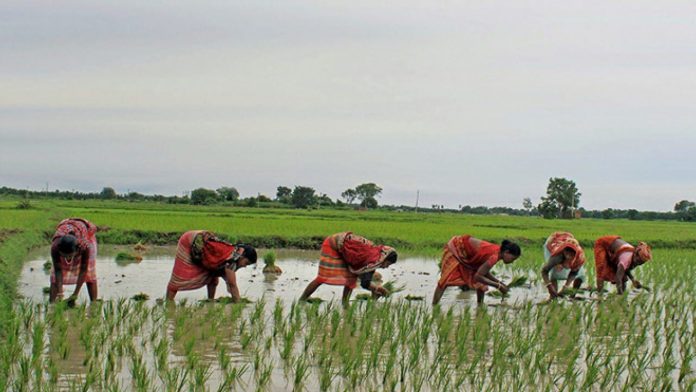

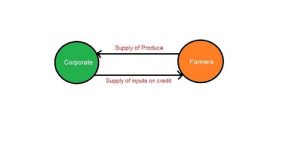
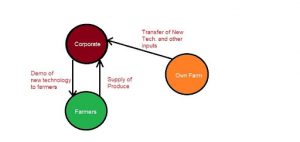
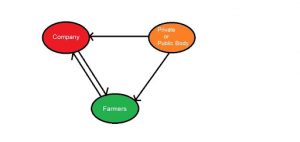

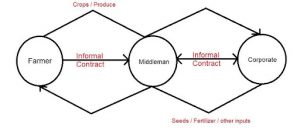
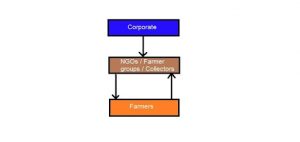

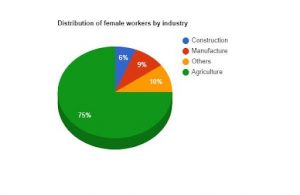





 Allow notifications
Allow notifications



